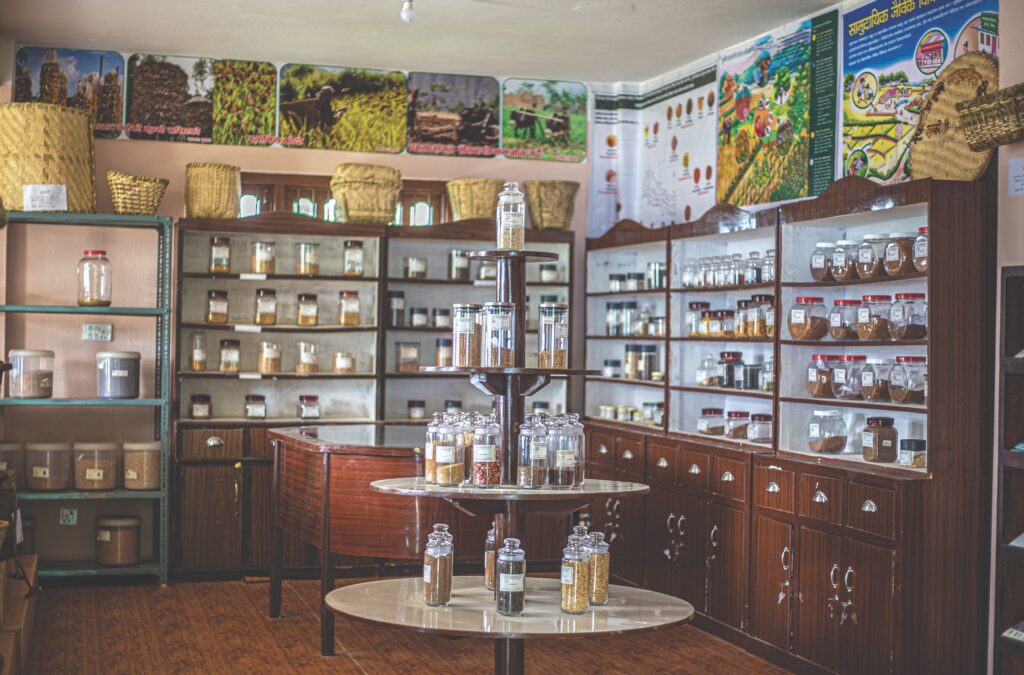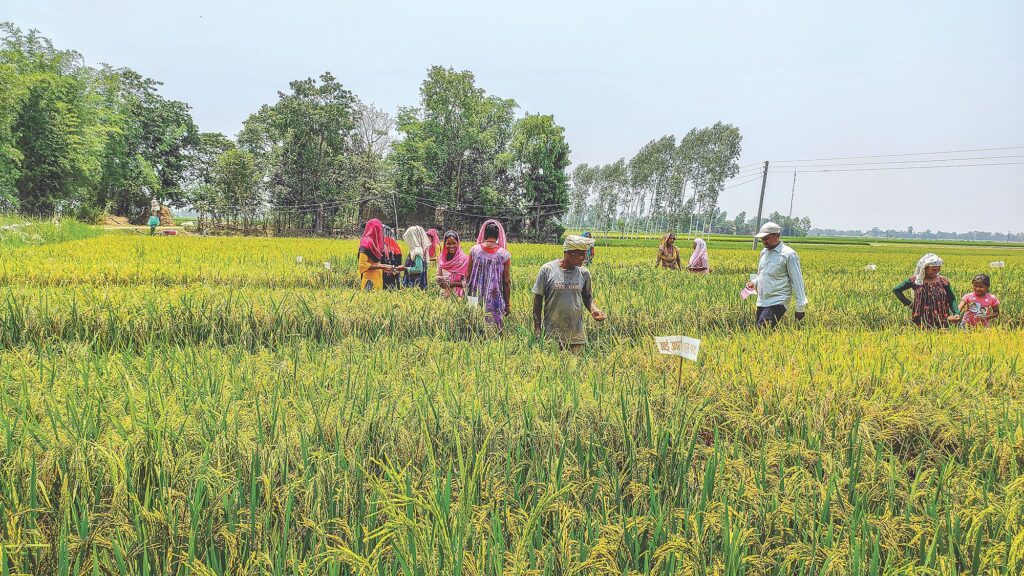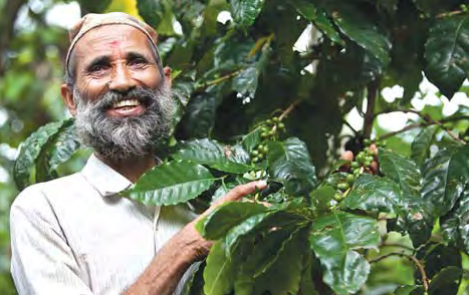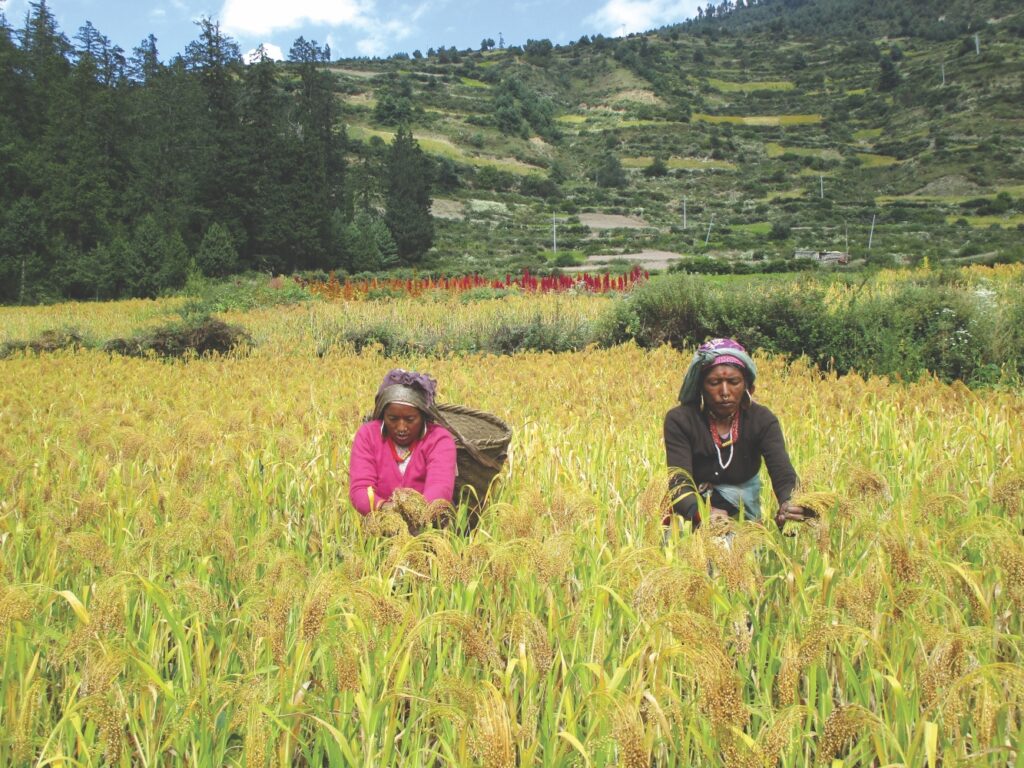Nepal’s mountain farmers are already adapting to the impacts of climate change on their own
【Pokhara, Nepali Times=Benjamin Zimmerman】
Himalayan farmers are at the forefront of the climate crisis, having to deal with extreme heat or cold, prolonged droughts or excessive rain, landslides and floods.
But they are also the most resilient farmers, who have struggled on their own for generations to grow enough food on terraces meticulously carved into the fragile top soils of the slopes.
“The government did not know or care about us farmers up here,” says Surya Adhikari, 70. “We have to adapt to climate change on our own, just like all the other problems we have dealt with in the past.”
Indeed, the problems of Himalayan mountain agriculture predate climate change, and for farmers like Adhikari it is just the latest crisis they have to deal with.
In his own lifetime, Adhikari has seen the snowline recede up the Annapurna range that towers over his village of Sundari Danda near Pokhara, and once predictable weather patterns have become erratic. Adhikari has responded by diversifying crops, ensuring irrigation, and protecting indigenous seeds.
Climate scientists say the Himalayan mountains are warming up to 0.7°C more than the global average due a phenomenon called ‘altitude effect’. In 2023, global average temperature rose by 1.5°C above pre-industrial levels, and this means in these mountains the increase was 2.2°C.
Part of the impact is record-breaking heat even at a 1,500m elevation in these villages near Pokhara, and there have been successive years of dry winters. This spring saw record-breaking wildfires that raged for months nationwide, and many of the surrounding slopes around Begnas and Rupa lakes still bear the scars of fires.
These changes combined with economic factors have intensified out-migration with some districts like Kaski seeing a 17% drop in population since 2011.
Read also: Climate change hits Himalayan rice, Erica Wu
Even though rural youth are migrating out, Nepal is still a predominantly agricultural country with two-thirds of the population dependent on farming, and 33% of the GDP coming from agriculture.
Thus, when late monsoons delay the planting of rice or when droughts destroy crops, it is not just the agricultural sector that suffers but the country’s economy as a whole. Nepal is already a net importer of food products, and imports have grown most noticeably in the last 10 years.
This year’s monsoon so far has been higher than normal, and paddy planting is supposed to be nearly 100% nationwide. But cloudbursts have also set off landslides and flashfloods. This week, 12 more people were killed in landslides in Gulmi and Baglung, bringing the total death toll since June to at least 175.
The trend over the past decade has been that monsoon rains start later than usual. There are extended dry spells followed by destructive local downpours. Groundwater levels have fallen due to insufficient recharge and over-extraction, making springs go dry.
Without adequate government investment in building and maintaining irrigation systems, farmers in many rural areas are entirely at the mercy of the rains.
Delayed planting leaves fields barren and susceptible to erosion of nutritious top soil, while also pushing back the harvest cycle. When the rains do come, intense storms damage or destroy crops.
Similarly, pests previously found only in the Tarai or those entirely foreign to Nepal such as the American fall armyworm, which targets maize, are moving up the mountains. Agriculture in Nepal is mostly subsistence to begin with, but the climate crisis has pushed them off the edge, forcing many to abandon their fields and migrate to the cities or abroad.
Pokhara-based LI-BIRD (Local Initiatives for Biodiversity, Research and Development) works in 23 districts to improve livelihoods of small farmers while conserving biodiversity. It has proven answers to help farmers adapt to the impact climate crisis, and just needs the government to scale up the measures nationwide.
Read also: Agroecology, Nepal’s answer to climate change, Zachary Barton
Focus on farms

Indigenous paddy, wheat, millet and buckwheat seeds are hardier than imported hybrids, and better able to adapt to a hotter climate. They have evolved to local soils and the micro-climate, and are genetically better suited to deal with changes.
This is what the Pokhara-based action research organisation LI-BIRD is trying to do: preserve indigenous crop varieties through its seed banks, and distribute them through farmer-owned cooperatives.
“When working to improve agriculture, we have to keep farmers at the front and centre, particularly their traditional knowledge,” says Bishnu Bhusal of LI-BIRD. “Bringing outside knowledge is not going to work here.”
LI-BIRD’s Participatory Plant Breeding initiative gathers a variety of seed samples of local crops from farmers and plants them side-by-side (pictured, right). Those samples deemed most fit by farmers in terms of yield, weather and pest resistance are then distributed across the country by the Community Seed Bank Association.
Local seed banks, collections of region-specific seeds made available to farmers, allow for what Bhusal says is “conservation through use”. This ensures that indigenous crops have a chance to evolve, and do not face extinction from natural disasters or climate change.
While imported high-yielding seed varieties are tempting, they also require expensive chemical fertiliser and pesticide inputs, which also end up destroying the soil. Indigenous seeds are significantly more resilient and reliable.

“Even with minimal care and inputs, local varieties survive,” explains Jenny Shrestha of LI-BIRD. “This means less fertiliser, pesticide, and water are needed.”
Indigenous seeds are naturally adapted to local environmental conditions and thus are more resistant to pests, droughts, and other disasters, she adds.
“When the climate changes, harvest reduction is much greater in imported seed varieties than local indigenous varieties,” Shrestha says, pointing to the performance of Setho Dabdi wheat variety native to Doti which in tests in 2022 gave higher yield than imported wheat despite a winter drought.
While crop dependability is important, so is sustainable income. Landscape Branding, whereby agro products are marketed for being endemic to a certain region demanding high market value, has become an incentive for farmers to return to local indigenous crops.
Two such crops are Pokhareli Jethobudho, a rice native to Pokhara and admired for its aroma, and Setho Kaguno, the foxtail millet native to the fields near Begnas and Rupa Lakes. Both products are branded and marketed by the social enterprise Annapaat, guaranteeing farmers a set minimum rate. In coordination with local governments, farmers are reimbursed if they are unable to sell their products at or above that rate, which for Setho Kaguno is Rs120 per kg.
LI-BIRD’s success with seeds are now being upscaled by the government. The Crop Development and Agricultural Biodiversity Conservation Centre of the Ministry of Agriculture is helping farmers across 30 districts with money to preserve local crops.
Government subsidy on organic pesticides is also encouraging sustainable farming methods, although there is skepticism whether it is the government or non-profits driving this initiative.
Read also: Nepal sets ambitious target for food sufficiency, Ramesh Kumar
Alternative cash crops
Resilience to the impact of the climate crisis can also come from diversifying to cash crops that raise household incomes, allowing farmers more breathing space.

Surya Adhikari is a well-known plant breeder in Begnas, and has begun noticing troubling environmental changes after more than 40 years working in agriculture.
“In the last five years, it has become so hot that it is hard to stay in the village and the crops won’t grow because there are so many bugs and pests,” he says.
So, Adhikari has taken to coffee and fruits, which have proven to be more resistant to heat stress compared to traditional crops such as rice, which he used to grow. Coffee takes up minimal space and enriches soil quality, while also allowing other crops to be grown in between.
But with pests and erratic rainfall becoming even bigger threats of late, Adhikari is diversifying further to moringa, nicknamed ‘Miracle Tree’ for its myriad medicinal benefits.
Moringa leaves are used in dietary supplements, are rich in vitamins, have antioxidant properties and fetch a high market price.
Moringa is fast-growing and drought resistant, and Adhikari was a pioneer in introducing the tree to Nepal, but wishes the government was more proactive in helping market this unique product.
Government inaction is a given, Adhikari reckons, and this means farmers like him have to find innovative ways to adapt to the climate crisis on their own.
He says, “The government makes a policy but it is often short-sighted, and on-the-ground implementation never really happens.”
Whether it is seed preservation or climate-change education, rural farmers are therefore on their own. This means climate impact, on top of lack of jobs and opportunities, is driving increased outmigration.
“The government is happy to neglect farmers because there is enough money coming from overseas remittances,” says Adhikari, “We have to bring changes on our own.”
Which is why Adhikari is organising farmers so there is strength in numbers, and adaptation ideas can be shared more widely. The National Farmers Group Federation is playing this role as an umbrella organisation for advocacy organisations at the village, district, and central levels.
Read also: The Karnali’s hunger emergency, Anita Bhetwal
Mighty Millet

Although she may not have an official title, Ambika Bhandari is a leader in her village. Five years ago, she began piloting the Setho Kaguno variety of local millet on her farm, previously having grown maize like many locals.
Seeing Bhandari’s strong yield and the higher market value for her millet, neighbouring farmers in the village of Kafalghari in Kaski followed in her footsteps.
Changing weather patterns and heat stress convinced farmers to switch from maize to millet. Five years later, Kafalghari today is the biggest Setho Kaguno producing village in the country, harvesting more than 2.56 tonnes last year.
Bhandari gets her seeds from LI-BIRD’s seed bank and sells her crop to the non-profit Merit Pokhara, which is run by students also inspired by LI-BIRD’s work with seed preservation.
Merit provides farmers like Bhandari with instruction on using phone apps to track rain and temperature patterns so as to ensure planting, harvesting, and drying are carried out at optimal periods.
Based on Merit Pokhara’s model, the local government adopted a compensatory scheme to ensure farmers are paid fairly for their produce. Says Bhandari: “This public-private cooperation has been truly helpful. It also proves that we carve out our own destiny even without outside help.”
Read also: Grain drain, Chandrakishore
This article is brought to you by Nepali Times, in collaboration with INPS Japan and Soka Gakkai International, in consultative status with UN ECOSOC.


